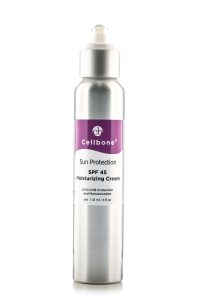
Some facts to help you understand just how harsh our sun is:
FACT #1 Skin cancer occurs when skin cells are damaged, for example, by overexposure to ultraviolet (UV) radiation from the sun
FACT #2 There are three main types of skin cancer:
- Basal cell carcinoma
- Squamous cell carcinoma
- Melanoma – the most dangerous form of skin cancer
FACT #3 Two in three Australians will be diagnosed with skin cancer by the time they are 70
FACT #4 More than 750,000 people are treated for one or more non-melanoma skin cancers in Australia each year.
A common concern for Australian women is having to apply sunscreen under our makeup which can often leave our makeup sitting uneven, going gluggy, or looking white & greasy. FACT – this doesn’t always have to be the case!
With an endless aisle of options, finding the right sunscreen that works for you can be difficult. One way to figure out which one works for you is knowing the difference between the two types of Sun Protection Factor (SPF): chemical and physical.
Here’s a little overview;
What is SPF?
SPF refers to the Sun Protection Factor offered by various sunscreens. A higher SPF doesn’t indicate superior sun protection—it indicates that you will remain protected in the sun for a longer amount of time. For example, an SPF 2 protects your skin just as effectively as an SPF 30. However, an SPF 2 will need to be applied more frequently. To be safe, no matter what SPF you choose, it’s best to reapply sunscreen at least every two hours, as well as after swimming or sweating.
Ultraviolet A (UVA) rays penetrate deeper into the skin and promotes signs of aging. UVA rays are that strong they are able to penetrate glass. This leaves our skin open to damage while just driving 5 minutes down the road during summer. Ultraviolet B (UVB) rays affect the surface level and can cause cancer. You ideally want a sunscreen that defends against both, called broad-spectrum.
Physical SPF VS. Chemical SPF
Physical SPF is like applying a shield onto your skin, as it reflects the sun’s rays & isn’t capable of soaking into the skin (a great option for pregnant or breast-feeding mums). It immediately blocks both UVA and UVB rays by using the ingredients zinc oxide and titanium oxide – THE perfect combination to create a broad-spectrum SPF! Sometimes referred to as mineral sunscreen, these natural ingredients can protect your skin and are often ideal for anyone who suffers from the dreaded break out as they aren’t known to cause skin irritation or breakouts – in saying this, a physical SPF can sometimes result in a slight white sheen on the face after application.
Chemical SPF is made from, well, chemicals. Octocrylene, avobenzone and octinoxate are common ingredients that will be listed within the ingredients list of a chemical sunscreen. Unlike physical, you have to let a chemical sunscreen sit for about 15 minutes prior to sun exposure for it to work properly. Chemical sunscreens absorb the sun’s rays opposed to reflecting them like a physical sunscreen therefore if you have sensitive skin, you might want to avoid a chemical SPF as it may cause irritation. There is definitely a time where a Chemical SPF is needed – such as when you’re at the beach or in the park as chemical SPF can often have a higher SPF rating and won’t wash off in the water or with sweat.
No matter what type of SPF you decide to use, neither will work if you aren’t applying enough or properly. Applying every 2hours, roughly half a teaspoon of sunscreen is recommended and of course wearing your big floppy hat whenever you can! No one has to become a vampire during summer – enjoy the beautiful environment we live in but do it safely -SLIP, SLOP, SLAP!
Related Tag: skin clinic gold coast
Below are our top picks for SPF 30+;

Cellbone Sun Protection SPF45 Moisturising Cream $60

Cosmedix Reflect Broad-Spectrum SPF30 Sunscreen $77

